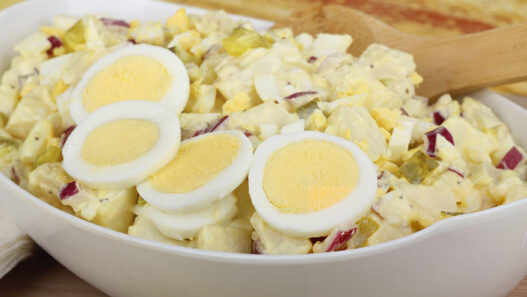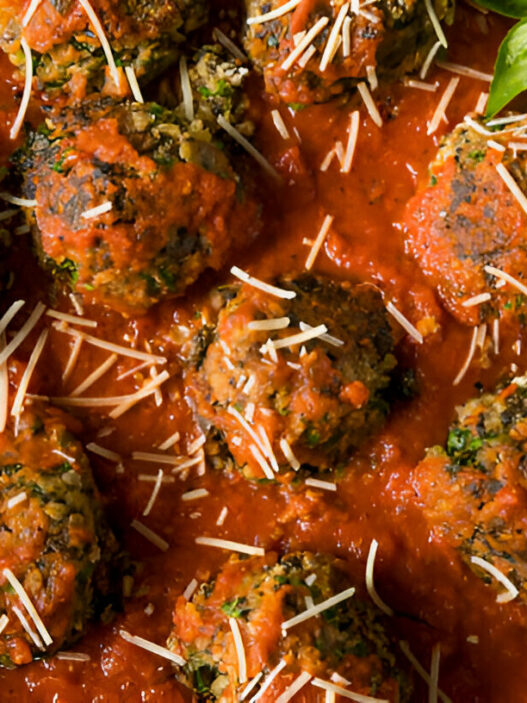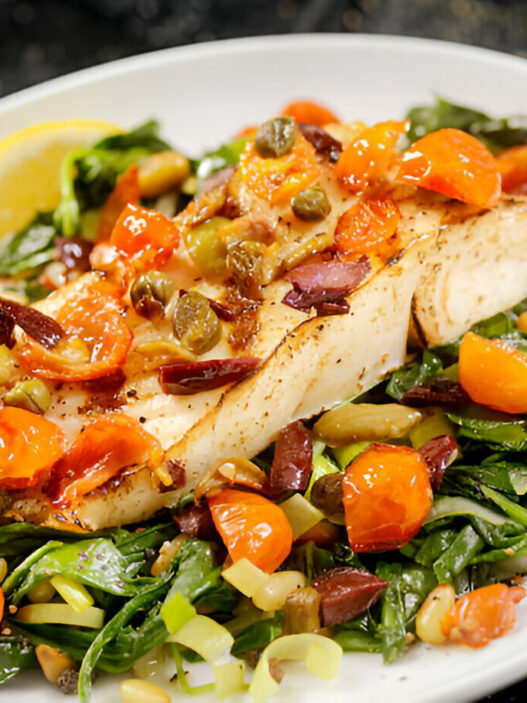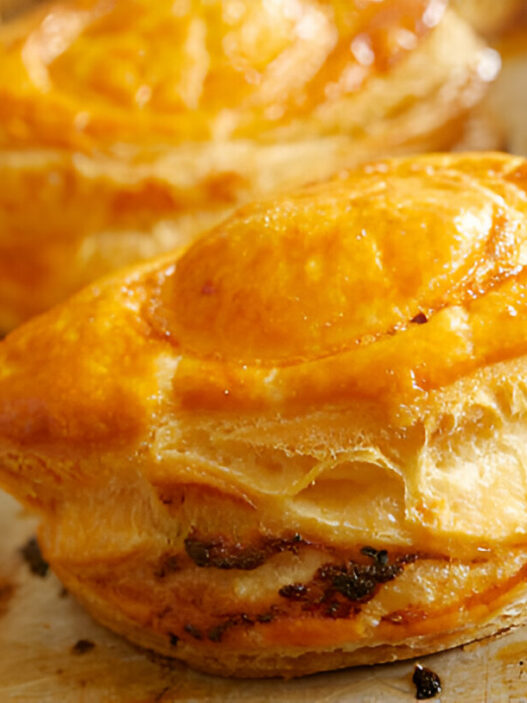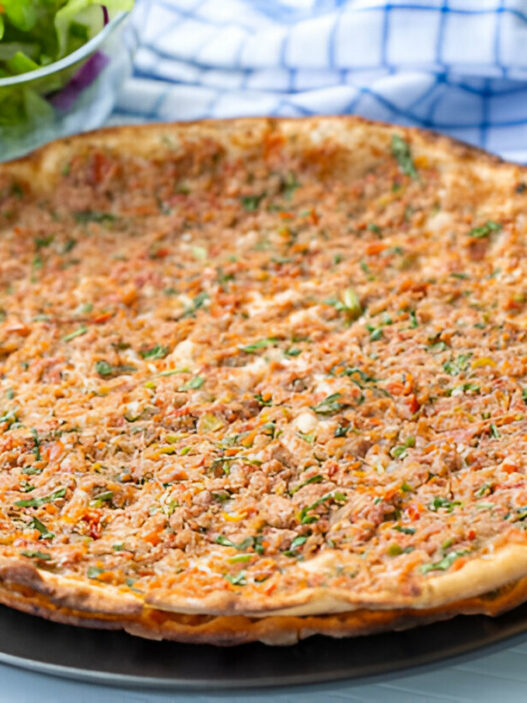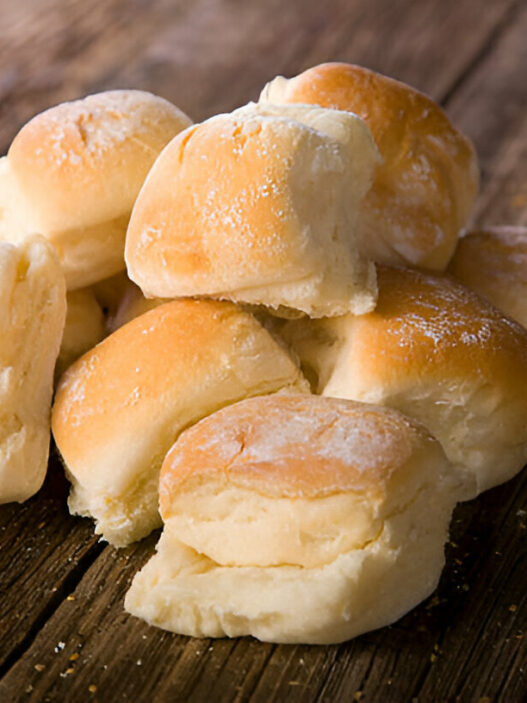Few dishes deliver texture and finesse quite like a plate of freshly made tempura. Light, shatteringly crisp, and never greasy, tempura transforms simple shrimp and vegetables into golden bites of perfection. Achieving that signature airy crust is a culinary balancing act—requiring just the right batter consistency, oil temperature, and timing.

Ingredients Breakdown
Fresh, high-quality shrimp is a must. Look for medium to large shrimp, peeled and deveined, with tails on for easier handling and classic presentation. Straightening them isn’t just aesthetic—it prevents curling during frying, ensuring even coating and texture. A few shallow cuts along the belly or threading onto skewers do the trick.
Vegetables provide color, variety, and a canvas for the delicate batter. Choose firm, moisture-light options like kabocha, carrots, sweet potato, and eggplant. Slice them thinly and evenly so they cook through quickly and consistently in the hot oil. Softer vegetables like zucchini or bell peppers also work beautifully with a lighter hand.
The batter is what makes tempura stand apart. A blend of all-purpose flour and potato starch gives the right balance between structure and crispness. The cold vodka and carbonated water reduce gluten formation while creating airy bubbles for a light texture. The batter must remain cold and mixed just until combined—lumps are welcome and overmixing is forbidden.
Neutral, high-smoke-point oil such as canola or sunflower is ideal. Depth is important too—about 2 inches is enough to allow ingredients to float freely, cooking evenly and crisping from all sides without absorbing too much oil.
No tempura experience is complete without its signature companion: tentsuyu. Made from dashi, soy sauce, and mirin, it’s savory, slightly sweet, and full of umami—enhancing each bite without overpowering the subtle batter.
Step-by-Step Preparation Guide
Begin with the shrimp. Rinse thoroughly and pat dry. If the heads are attached, remove them, then carefully devein each shrimp. To prevent curling, score the inner curve of the belly or slide a skewer through from tail to tip. Once prepped, lay the shrimp on paper towels to absorb moisture—dry ingredients fry better.
Prepare vegetables by washing, drying, and slicing with precision. Kabocha and root vegetables should be no thicker than ⅛ inch. Eggplants can be sliced fan-style for visual impact, while zucchini should be cut into long, even strips to cook evenly.
To make the batter, first combine the dry mix—flour and half of the potato starch. Separately, beat the egg, stir in the chilled vodka, and add the carbonated water. Pour the wet ingredients into the dry and stir briskly with chopsticks for no more than 60 seconds. The result should be a cold, lumpy mixture.
Before dipping, lightly coat each piece of shrimp and vegetable in the reserved potato starch. This extra step improves batter adhesion and helps develop a thin, crispy shell.
When frying shrimp, hold by the tail, dip in batter, and gently lower into oil preheated to 350°F. Let it sizzle and set, then drizzle a bit more batter into the oil for extra crispy threads. Flip after a minute or so and cook until golden. Drain on a wire rack lined with paper towels.
Vegetables follow the same process. Starch, batter, oil. Root vegetables take about 3 minutes, while zucchini, eggplant, and other tender veggies are done in 1–2 minutes. Watch closely—tempura should be pale and golden, not dark.
For the dipping sauce, combine water, dashi, soy sauce, and mirin in a small saucepan. Bring to a gentle boil, simmer for a minute, then remove from heat. Serve warm in individual bowls for dipping.
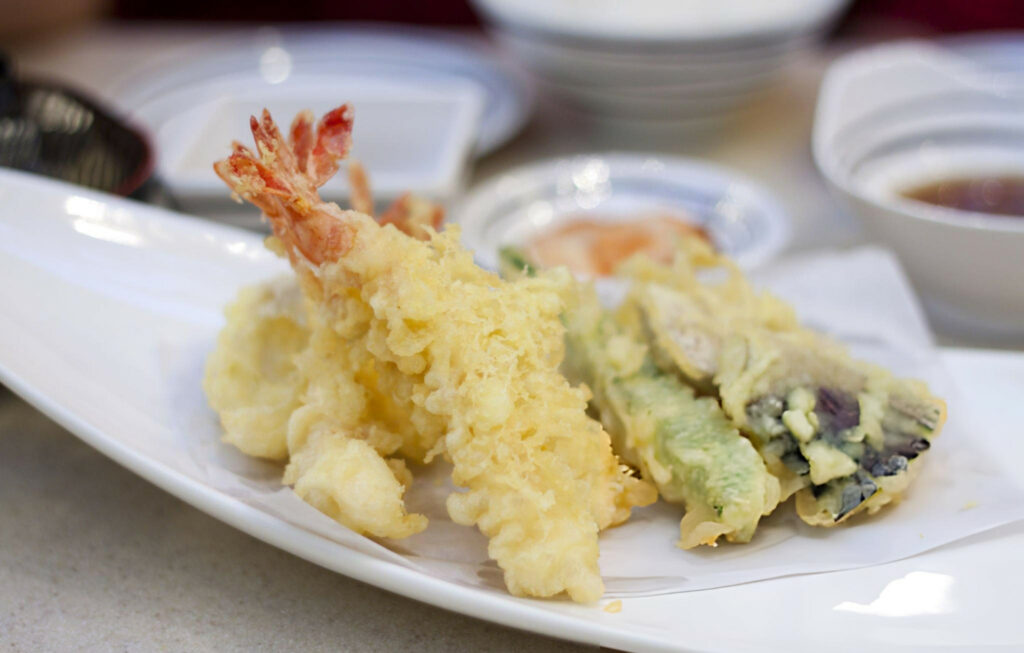
Recipe Tips
How to keep the batter cold throughout frying:
Chill the bowl in the fridge before mixing, and nest it in an ice bath during frying for consistent temperature.
Best way to avoid soggy tempura:
Ensure ingredients are dry, batter is cold, and oil temperature remains steady. Fry in small batches.
Tools that make slicing and frying easier:
Use a mandoline for uniform slicing and long chopsticks or a wire skimmer for safe handling in hot oil.
How to reuse frying oil properly:
Strain cooled oil through cheesecloth to remove crumbs, store in a clean jar, and reuse for another round of frying.
Timing multiple batches so everything stays hot and crispy:
Keep finished tempura warm on a wire rack in a low oven (around 200°F) while frying the rest.
What to Serve With This Recipe
A traditional tempura meal shines with a few well-chosen sides. Steamed short-grain rice and a bowl of miso soup make the meal complete and balanced. Their mild flavors support the tempura without overshadowing it.
Add pickled vegetables or tsukemono for a crisp, acidic counterpoint. Their brightness balances the richness of the fried coating and refreshes the palate.
Serve with a simple cucumber salad or wakame seaweed salad for a light, hydrating contrast that complements the umami-rich dipping sauce.
For drinks, a warm cup of green tea, a crisp lager, or a chilled glass of dry sake pairs effortlessly—cutting through the oil while enhancing subtle flavors in the batter and fillings.
Frequently Asked Questions
Can I make the batter ahead of time?
No. The batter should be made just before frying to preserve its lightness and cold temperature.
What other proteins work well for tempura?
White fish, squid, scallops, tofu, or even boiled eggs can be used. Ensure everything is dry and cut into manageable pieces.
How do I know when the oil is the right temperature without a thermometer?
Drop a bit of batter into the oil—it should float and sizzle gently, not sink or brown too quickly.
Can I bake or air-fry tempura instead of deep frying?
Deep frying is essential for true tempura texture. Baking or air-frying changes the batter structure and crispness.
How do I store and reheat leftover tempura?
Store in the fridge for up to one day. Reheat in a toaster oven or hot skillet to revive the crunch—never microwave.
Creative Variations
Take tempura beyond the basics with seasonal vegetables like lotus root, asparagus, or shiso leaves. Their textures and flavors shine through the light coating.
Try a runny soft-boiled egg coated and fried for a dramatic, creamy surprise.
Infuse your dipping sauce with yuzu zest or serve with flavored salts like matcha, curry, or togarashi for a fresh spin.
For a hearty twist, pile assorted tempura over steamed rice and drizzle with tentsuyu or tare to make tempura donburi—a comforting, satisfying meal in a bowl.
Mastering tempura at home is all about balance—light batter, hot oil, quick hands, and fresh ingredients. The result is a dish that’s elegant yet comforting, delicate yet bold. Whether shared as an appetizer or served as a centerpiece, tempura brings artistry and texture to the table in every golden bite.
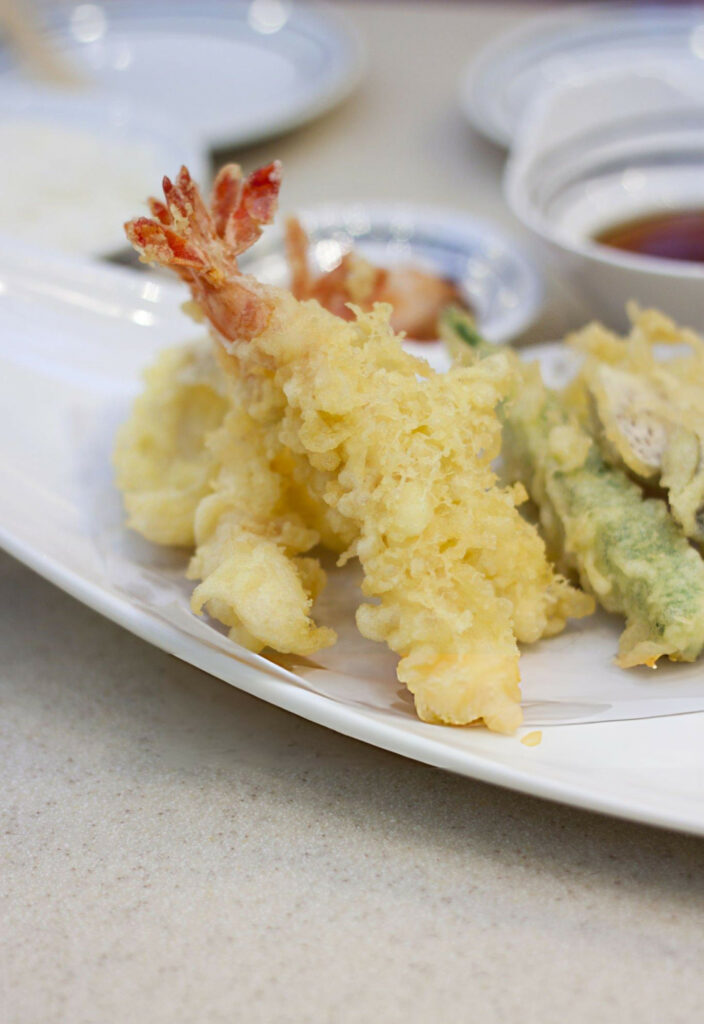
Ingredients
Shrimp and Vegetables
½ lb shrimp, peeled and deveined
2 cups assorted vegetables, sliced evenly
Tempura Batter
¾ cup all-purpose flour
½ cup potato starch (divided)
1 large egg
¼ cup vodka, chilled
¾ cup carbonated water, chilled
Neutral oil, for deep frying
Tentsuyu Dipping Sauce
1 cup water
2 grams dashi mix
¼ cup soy sauce
¼ cup mirin
Instructions
Shrimp and Vegetables
Rinse and pat dry the shrimp. Remove their heads if still attached, and gently devein them. To help straighten the shrimp, make shallow, diagonal cuts (about ⅛ inch deep) along the inner curve of the belly. Alternatively, skewer each shrimp from tail to head to maintain a straight form. Lay them flat over paper towels to absorb excess moisture.
Tempura Batter
Pour about 2 inches of neutral oil into a heavy-bottomed pot or wok. Heat over medium until it reaches 350°F.
In a mixing bowl, combine the all-purpose flour with half of the potato starch. Reserve the remaining half for dusting the ingredients just before frying.
In a separate bowl, beat the egg lightly. Add the chilled vodka and carbonated water. Gently pour the wet mixture into the flour mixture and stir using chopsticks with quick, light strokes. Move the bowl in circles while stirring to combine without overmixing. The batter should remain slightly lumpy and mixed in under a minute.
Place the reserved potato starch into a shallow dish. Lightly dust shrimp and vegetables with starch to help the batter adhere better and to promote a crisp texture.
Frying Shrimp
Holding the shrimp by the tail, dip it into the batter, coating it fully. Gently lower the shrimp into the hot oil. For extra crispy bits, use your fingers or chopsticks to drizzle a few drops of batter into the oil over the shrimp.
Fry for 1–2 minutes per side, turning once. When golden and crisp, remove and place on a wire rack lined with paper towels.
Frying Vegetables
Dip each vegetable slice into the batter and carefully lower into the hot oil. Fry root vegetables for around 3 minutes and softer vegetables like zucchini or eggplant for 1–2 minutes, depending on their thickness. Turn occasionally to ensure even cooking.
Once pale golden and crisp, remove from the oil and set on a prepared rack with paper towels.
Tentsuyu Dipping Sauce
In a small saucepan, combine water, dashi mix, soy sauce, and mirin. Set over medium-low heat and bring to a boil. Simmer for one minute, then remove from heat. Serve warm or at room temperature in small individual dipping bowls.
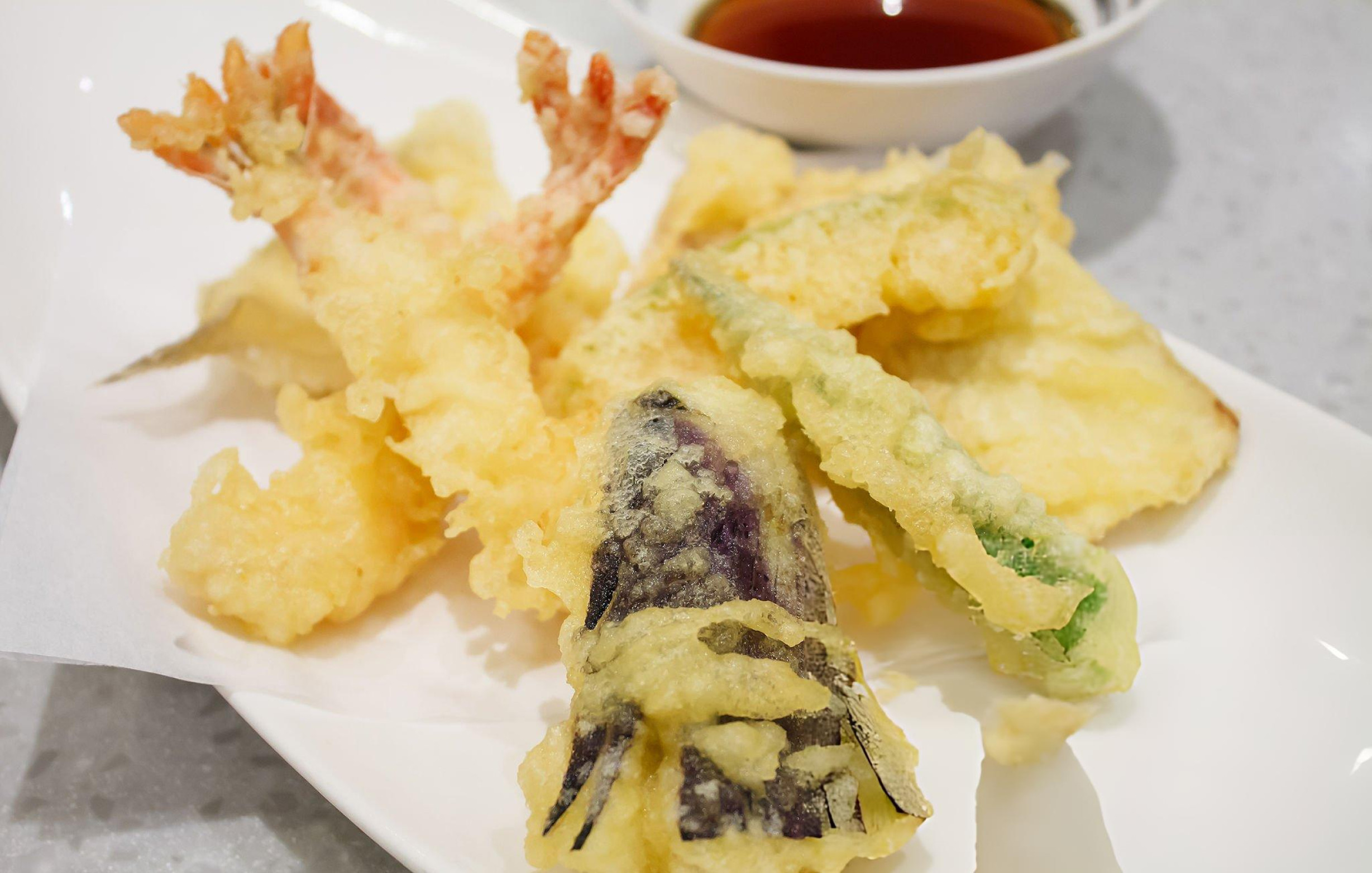
Tempura Recipe
Ingredients
Shrimp and Vegetables
- ½ lb shrimp peeled and deveined
- 2 cups assorted vegetables sliced evenly
Tempura Batter
- ¾ cup all-purpose flour
- ½ cup potato starch divided
- 1 large egg
- ¼ cup vodka chilled
- ¾ cup carbonated water chilled
- Neutral oil for deep frying
Tentsuyu Dipping Sauce
- 1 cup water
- 2 grams dashi mix
- ¼ cup soy sauce
- ¼ cup mirin
Instructions
Shrimp and Vegetables
- Rinse and pat dry the shrimp. Remove their heads if still attached, and gently devein them. To help straighten the shrimp, make shallow, diagonal cuts (about ⅛ inch deep) along the inner curve of the belly. Alternatively, skewer each shrimp from tail to head to maintain a straight form. Lay them flat over paper towels to absorb excess moisture.
Tempura Batter
- Pour about 2 inches of neutral oil into a heavy-bottomed pot or wok. Heat over medium until it reaches 350°F.
- In a mixing bowl, combine the all-purpose flour with half of the potato starch. Reserve the remaining half for dusting the ingredients just before frying.
- In a separate bowl, beat the egg lightly. Add the chilled vodka and carbonated water. Gently pour the wet mixture into the flour mixture and stir using chopsticks with quick, light strokes. Move the bowl in circles while stirring to combine without overmixing. The batter should remain slightly lumpy and mixed in under a minute.
- Place the reserved potato starch into a shallow dish. Lightly dust shrimp and vegetables with starch to help the batter adhere better and to promote a crisp texture.
Frying Shrimp
- Holding the shrimp by the tail, dip it into the batter, coating it fully. Gently lower the shrimp into the hot oil. For extra crispy bits, use your fingers or chopsticks to drizzle a few drops of batter into the oil over the shrimp.
- Fry for 1–2 minutes per side, turning once. When golden and crisp, remove and place on a wire rack lined with paper towels.
Frying Vegetables
- Dip each vegetable slice into the batter and carefully lower into the hot oil. Fry root vegetables for around 3 minutes and softer vegetables like zucchini or eggplant for 1–2 minutes, depending on their thickness. Turn occasionally to ensure even cooking.
- Once pale golden and crisp, remove from the oil and set on a prepared rack with paper towels.
Tentsuyu Dipping Sauce
- In a small saucepan, combine water, dashi mix, soy sauce, and mirin. Set over medium-low heat and bring to a boil. Simmer for one minute, then remove from heat. Serve warm or at room temperature in small individual dipping bowls.

